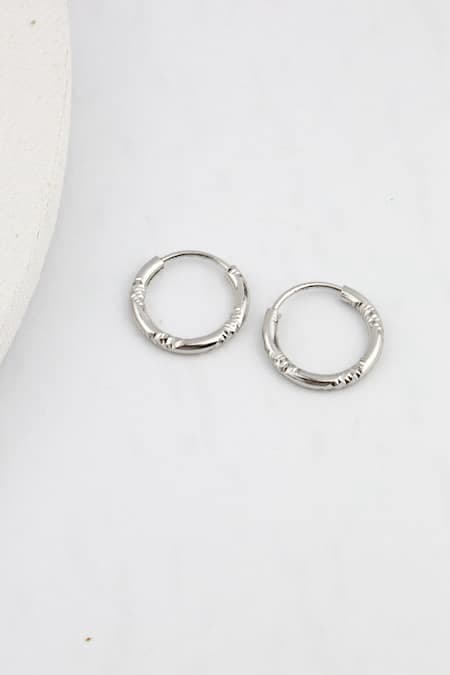What Is The Difference Between Spandex, Latex, And Lycra?
Is spandex the same as latex? You’ve probably heard of these two similar-sounding materials before, but you may be wondering if they are the same or different.
Simply put, spandex is not the same as latex.
Spandex is a synthetic fiber that does not contain any latex. Latex is a material that is derived from the rubber tree, and it’s common in many products like latex gloves, balloons, sneakers, and more.
Some people have allergic reactions to latex and, less commonly, to spandex. If you are allergic to latex, you can still wear spandex clothing and use spandex products, and vice versa.
Here’s more information about spandex, and how it differs from latex.

What is Spandex?
Spandex, also known as Lycra or elastane, is a stretchy material commonly seen in clothing. It was developed in 1958 by chemist Joseph Shivers at DuPont, making its debut in the United States in 1959.
The first use of Spandex was seen in bras and underwear but is now a staple in the garment industry and used in many types of clothing with elastic fibers.
The name spandex is an anagram of the word “expands” and was given to the material due to its elasticity. It’s become a staple in specific types of clothing due to the amount of stretch and comfortability it provides.
You’re probably most familiar with spandex in the stretchy elastic thread of waistbands of clothing, underwear, swimsuits, and performance wear. In general, a piece of clothing made in part with spandex is usually considered a more comfortable garment than those without.
But what about Lycra?
The name Lycra is just the brand name for spandex that was developed by DuPont, and it’s also known by the generic term elastane.
Spandex fiber is at least 85% polyurethane, which is a synthetic polymer. This gives spandex the lightweight, stretchy consistency it’s known for. Because spandex is so flexible, it’s used in lots of sportswear, activewear, and other clothing made of synthetic fabrics.
It is also the reason that you must follow proper care when washing and drying your spandex garments. Spandex clothing generally follows different wash instructions than cotton garments, so keep this in mind when purchasing new activewear.

What is latex?
Latex is a rubbery material that comes from the milky sap of several trees. There are a number of rubber-producing trees around the world that can produce latex, although the highest amount of trees is found in Brazil.
Rubber has been used for hundreds of years, but the most notable historical development was the invention of rubber tires by Charles Goodyear in the 1940s.
The manufacturing process for rubber has been refined over the years, and latex is now used in a variety of rubber-based items including toys, balloons, medical products such as gloves, and more.
It may be hard to think of latex as a natural material given its modern-day uses, but it does in fact come from tree sap.
Natural rubber latex is the most common material you’ll see in everyday items and clothing, but synthetic rubber can also be formed by linking polymer molecules from petroleum by-products together.
Is there latex in spandex fabric?
There is no latex in spandex fabric. Spandex fibers are synthetic and mainly made of polyurethane, while latex is a naturally-derived substance that comes from rubber tree sap.
Latex clothing includes some elastic waistbands of clothing and underwear, some bodysuits and leotards, and some stockings. It’s also commonly found in rubbery substances like latex gloves, sneakers, baby bottle nipples, and other household items.
Spandex garments include some elastic waistbands of clothing and underwear, yoga pants, leggings, stretch pants, socks, athletic wear, and performance wear.
The confusion between the two materials may arise from the similar names. With the “-ex” ending in both spandex and latex, it’s easy to see why many people wonder if the two materials are related and if latex is used in making spandex.
However, despite the similar-sounding names, these two substances are totally different, and there is no latex in spandex.
If you’re ever in doubt about whether an item is made with spandex or latex, check the tag or packaging to be sure.
Additionals FAQ’s
What is a latex allergy?
Many people are allergic to latex. In fact, it’s estimated that as much as 1% of the general population has a latex allergy, and that number can be as high as 10% among healthcare workers and other populations who must frequently wear natural rubber latex gloves.
Exposure to other latex products, such as latex balloons, tires, waistbands, and toys can also cause an allergic reaction. Since natural latex rubber is made from the sap of rubber trees, those who are allergic to the latex material are actually allergic to rubber tree sap.
What does an allergic reaction to latex look like? Latex allergies can be very severe. An allergic reaction to latex can result in hives, itchy and watery eyes, swollen eyes, facial inflammation, and difficulty breathing.
In very serious cases, there are even greater risks caused by latex allergies, and anaphylaxis may occur as a result of an allergic reaction to latex.
Can you be allergic to spandex?
While latex allergies are somewhat common, spandex allergies are rarer. Spandex allergies are typically a form of textile dermatitis, or irritation caused by a particular textile.
While it can happen even with natural fibers, textile dermatitis is most common with synthetic elastics like spandex, polyester, nylon, and rayon.
An allergic reaction to spandex can cause hives, blisters, dry skin, itchy skin, and other skin irritations. Since spandex is present in many types of clothing, you will want to check the label and avoid buying spandex clothing if you develop an irritation with the material, especially if you have sensitive skin.

Why do cheaper brands of clothing use Spandex?
Spandex is a synthetic fabric and synthetic fabrics are cheaper to make clothes with than natural fabrics.
It is more cost-efficient for fash-fashion brands such as Shein to use synthetic materials so they can keep their costs low and offer super cheap items. However, it is important to note that this often results in items of much poorer quality.
If you don’t prefer clothing made with spandex, there are many u.s. garment manufacturers that do not use synthetic materials in the production of their clothing.
Conclusion
So is spandex the same as latex?
To recap, spandex is not the same as latex. Although these two different names may sound similar, spandex and latex are totally different materials.
Spandex is a synthetic elastane fiber known for its exceptional elasticity and is commonly used in athletic wear, performance wear, leggings, and underwear. Lycra spandex is the brand name version of this material.
Latex is a natural material that comes from rubber tree sap, and the finished product is also used in elastic clothing, as well as common rubber items like tires and gloves.
If you think that you have an allergy to latex or spandex, speak with your health care provider. Health problems can arise from repeated allergic reactions and exposure to these materials.
Conclusion:





